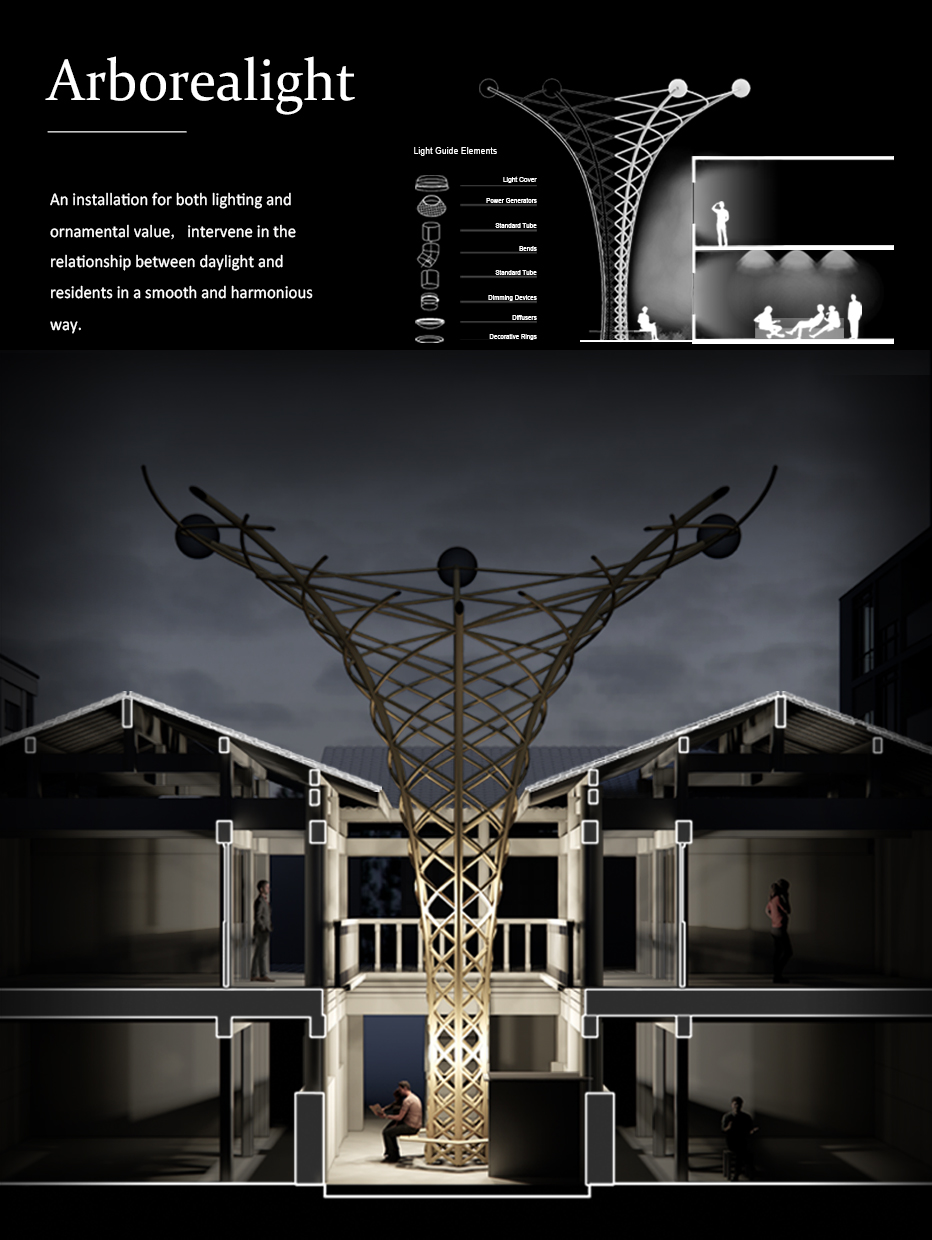Arborealight

Category
Daylight in buildings - Region 4: Asia and Oceania
Students
Yuyan Pan
Ruiqi Huang
Xinhang Xu
Shiqi Xu
Hanping Wang
School
Zhejiang University
Country
China
Download
Download ↓
As a form of space in traditional Chinese architecture, the patio is an open courtyard space enclosed by walls. In some of the ageing local-style dwelling houses in Hangzhou, the patio is a poorly lit space and is difficult for residents to use due to its small scale and longitudinal depth. While modern lighting facilities can easily provide a bright and comfortable light environment for residents, it is impossible to change people‘s craving for daylight as it’s deeply rooted in human nature. Considering the universality of poorly lit small patio spaces in old residential houses in both China and other parts of Asia, we hope to find a universal and effective way to improve the lighting condition of patio spaces and breathe vitality into traditional dwelling houses that are in decline.Trees— an integral element of traditional Chinese courtyards— are inextricably linked to traditional Chinese architecture and its inhabitants. With their soft natural gestures, trees soften the hard lines of architecture and bring people closer to nature. Based on the imagery of natural trees, we have designed an installation for both lighting and ornamental value and uses bamboo as its basic skeleton. It can be inserted into small patio spaces and intervene in the relationship between daylight and residents in a smooth and harmonious way.Bamboo— an abundant natural resource that has a long history of being processed and used in China— is hard-wearing, economical, easy to obtain and pleasing to the eye with its fine and rich textures. Using bamboo as the basic skeleton of the installation not only makes full use of the high tensile strength of bamboo in the direction of the grain, but also enables the installation to appear in traditional residential houses in a more rustic and natural way. The light-generating elements attached to the basic bamboo structure can be divided roughly into three parts— the light-gathering element on the top, the light guide, and the light-dispersing element at the bottom. The light-gathering element on the top of the light guide, wrapped in an acrylic dome, collects daylight and filters ultraviolet rays and infrared rays which can be harmful to human body. Small batteries and light-emitting components are also connected to the light-gathering element, enabling the installation to store energy during the day and release them to light up the patio space after sunset. The light guide is wrapped around the bamboo skeleton and transmits the converging light through the internal optical fibres. The light-dispersing element at the bottom of the light guide diffuses the light in all directions to achieve better lighting and visual effects. The skeleton of the device is easy to produce and the form can be flexibly changed according to specific situations, making it suitable for patio spaces of different scales. Moreover, the light-generating elements can be mass-produced and their quantity and form can also be adjusted freely to adapt to certain situations.By designing this installation, not only do we hope to improve the lighting condition of small patio spaces, but also transform the dull, dark and forgotten spaces in old residential houses into stages where daylight interacts with people in an unprecedented way.

































